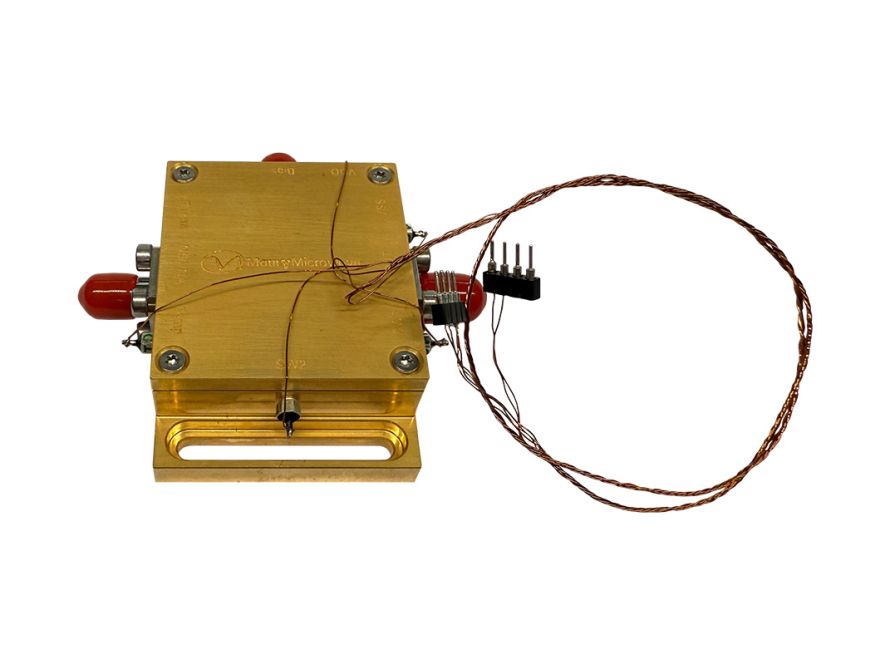High-performance tuners for ultra-low temperature characterization
Maury cryogenic impedance tuners are specifically designed to perform impedance matching in ultra-low, cryogenic temperatures, enabling accurate characterization of quantum devices and systems. Built to maintain exceptional performance and repeatability in extremely cold environments, these tuners support advanced research and development where the thermal stability and noise reduction of cryogenic low noise amplifiers (LNAs) are critical. With Maury cryogenic impedances tuners, engineers are empowered to push the boundaries of low-temperature device testing.

We specialize in fully integrated solutions.
Related Resources
03
Maury Microwave and National Physical Laboratory (NPL) Join Forces to Advance Cryogenic Measurement Capabilities for Quantum Computing
Learn how the partnership between Maury Microwave and NPL aims to advance cryogenic measurement capabilities for quantum computing, addressing the critical need for reliable microwave technologies operating at extremely low temperatures.
Latest News & Blogs
How Do You Measure Phase Noise at D-Band Frequencies?
As next-gen communications, radar, and sensing technologies push into D-Band, designers need advanced phase noise analysis solutions to maintain expected performance. This blog reviews common D-Band applications and how to…
What Are High-Power Microwaves and Why Do They Matter on the Battlefield?
High power microwave (HPM) technology is an effective tool to counter hostile electronic systems quickly and precisely. In this post, we’ll explore what HPM systems are, how they work, and…
How Can Engineers Validate the Power and Precision of High-Power Microwaves?
When an electronic threat is identified, high-power microwave (HPM) pulses can be used to shut down or destroy a target’s most essential systems. Achieving this level of performance requires advanced…
How Does Connector Care and Cable Phase Stability Impact Test Results?
RF and microwave connectors are essential in test setups, but simple oversights, such as using incompatible connector interfaces or careless storage, can degrade performance and cause costly equipment damage. In…
How Can Color-coded Connectors Prevent Costly Mistakes in the Lab?
RF and microwave test labs are dynamic environments with connectors everywhere. They’re found on cable assemblies, precision adapters, and attenuators, requiring the right torque wrenches to secure connections. With many…
What Is Pulse Compression Radar and What’s Needed to Test It?
From surveillance operations to mission-critical defense systems, pulsed radar is central to various applications requiring precise target information, such as range and velocity. In this blog, we’ll explore how pulsed…
How Do You Power Reliable EMC Immunity Testing?
Electromagnetic compatibility (EMC) testing ensures that electronic devices operate as intended in dense wireless environments without causing or being significantly affected by interference. EMC standards are pivotal across various industries,…
Why Does Pulse Shape Matter for Radar (and How to Accurately Characterize It)?
From air traffic control operations to weather monitoring to mission-critical military applications, pulsed and pulse compression (CHIRP) radar plays a vital role in target detection and tracking applications. In this…


